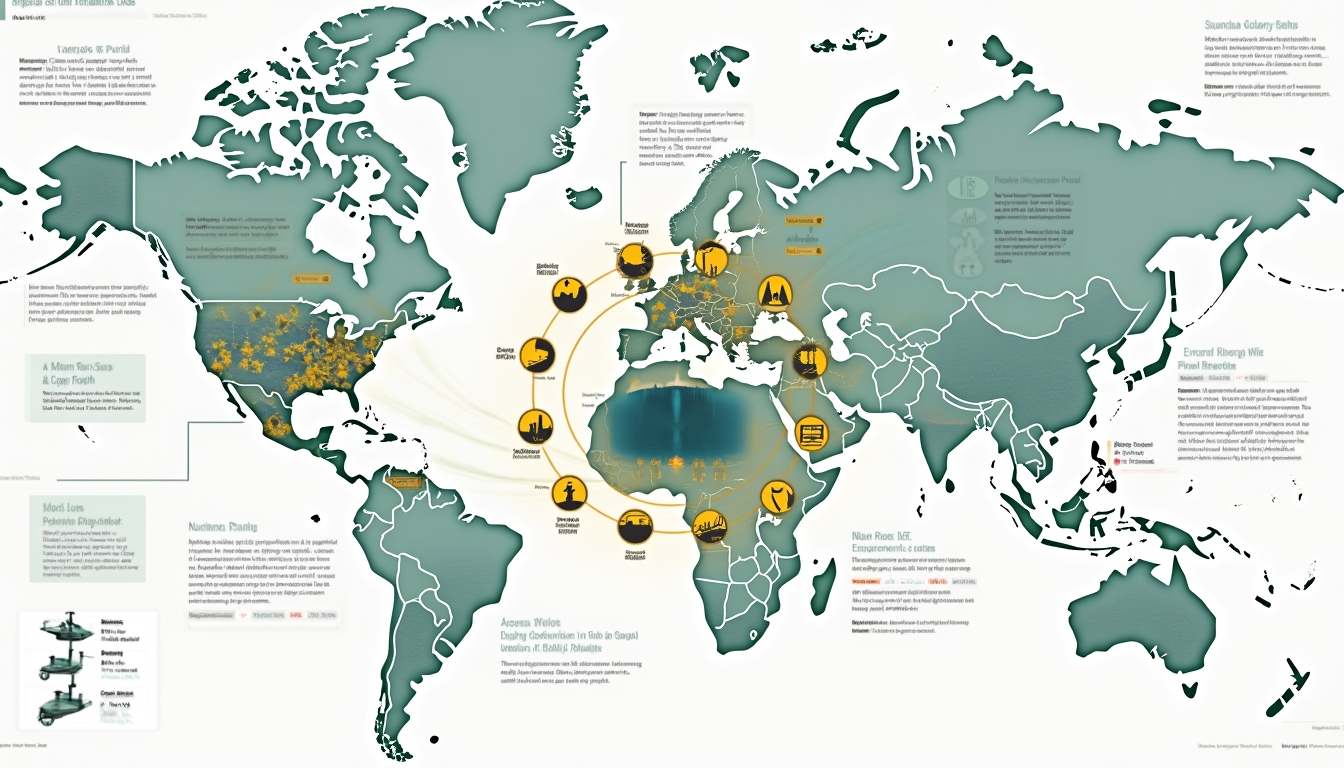China iron ore imports disruption Australia has become a significant issue in recent months. Early indicators from 2025 showed that demand and supply challenges were deepening. Global mineral supply chains have been under pressure, and industry experts are closely monitoring these trends through in-depth market dynamics analysis.
The import landscape was already signalling vulnerabilities as international trade faced unforeseen challenges. In particular, the ongoing disruption has reinforced the need to reconsider traditional supply routes and contingency planning. This situation underscores the importance of examining the interaction between regional events and global market operations.
What Happened to China's Iron Ore Imports in Early 2025?
China's iron ore imports contracted noticeably during January and February 2025. With a year-on-year decline of 8.4%, total imports reached 191.36 million metric tons. The monthly average of 95.68 million tons contrasts sharply with December’s robust 112.49 million tons.
Analysts argue that such disparities highlight how external factors can trigger sudden market shocks. The primary keyword has been evident in discussions as experts outline the evolving pressures behind these shifts.
Several external pressures, logistical limitations and environmental challenges contributed to this disruption. The evolving dynamics compel market players to contemplate both short-term setbacks and long-term adjustments.
How Significant Were the Import Declines?
The import figures for early 2025 illustrated a clear downturn in demand and supply synchronisation.
Key metrics include:
- An 8.4% decline in iron ore imports year-on-year.
- A total volume of 191.36 million metric tons imported over two months.
- A reduction in monthly averages from 112.49 to 95.68 million tons.
These figures suggest that even established markets can face critical disruptions when unforeseen factors converge.
The primary keyword resonates as disruptions force a revaluation of trade flows. Expectations for a quick recovery turned cautious, as the tangible decline signalled broader implications for global industries.
What Caused the Import Disruptions?
Extreme weather conditions played a pivotal role in the disruptions. Cyclone Zelia delivered a substantial blow to Australia’s export infrastructure. The cyclone’s impact, heightened by cyclone zelia events, severely affected port operations.
Port Hedland, one of the busiest hubs, experienced temporary suspensions. The port, recognized as a port hedland hub, was forced to halt regular operations.
A comprehensive weather disruption report details how such meteorological events undermine predictability in logistic operations.
Additionally, shipping schedules, labour availability and maintenance delays intensified the disruption. Supply chain bottlenecks became a cautionary tale for industries relying on just-in-time logistics. Local disruptions echoed through international corridors, magnifying the impact on global iron ore shipments.
How Did Major Producers Respond?
Leading mining conglomerates adopted strategic responses to offset supply losses. For example, Rio Tinto reported an anticipated loss of approximately 13 million tons due to the cyclone.
Companies quickly accelerated shipments as weather conditions improved, a move aimed at recovering lost volumes. This recovery strategy reflects the industry's agility in response to unforeseen events.
Industry experts point out that such adaptive measures may pave the way for future resilience.
Positive forecast adjustments suggest a potential rebound, with March import projections exceeding 100 million tons. External analysis on australian geopolitics also highlights how political and market pressures intertwine during such periods.
Strategic recalibrations and swift operational changes became essential. The rapid response from market leaders indicates that even significant weather disruptions may not derail broader recovery efforts.
What Are the Broader Market Implications?
Initial predictions by analysts foresaw a decline exceeding 10% annually. In reality, the market demonstrated a degree of resilience, revealing that global supply chains can adjust more swiftly than anticipated.
Key factors include:
- Geopolitical considerations in trade routes.
- Resilient logistical networks despite weather challenges.
- Increased focus on diversifying supply channels.
These implications extend beyond iron ore, affecting allied industries and transport sectors. The discussions continue to focus on how [china iron ore imports disruption australia] influences economic forecasts worldwide.
Market adaptability was further evidenced as stakeholders repositioned investments and sourcing strategies. This recalibration serves as a reminder that even in volatile times, strategic management can maintain stability.
China's Steel Export and Import Landscape
The dynamics of import disruptions had ripple effects on China's steel industry. While iron ore imports faced setbacks, China’s steel sector displayed contrasting trends.
Notable observations include:
- Steel exports increased by 6.7%, totalling 16.97 million tons.
- Steel imports declined by 7.2%, reaching just 1.05 million tons.
These figures indicate an internal rebalancing as businesses adjust to external pressures. Meanwhile, shifts in related sectors, such as battery production, underscore the importance of monitoring broader trends like lithium export controls.
This divergence points to a complex scenario where external disruptions may offer opportunities for growth in specific market segments.
Geological and Market Nuances
Several nuanced insights emerge from early 2025’s challenges:
- Weather events can dramatically reshape supply chain efficiencies.
- Cyclonic activities display how natural phenomena directly affect infrastructure.
- Rapid response measures showcase the industry's inherent resilience.
Such observations reinforce the notion that global trade networks must incorporate robust risk management frameworks. Understanding these nuances is vital for anticipating future disruptions.
Each of these points illustrates how varying regional factors converge to produce a larger economic impact. Ongoing analysis continues to reveal interconnected vulnerabilities within global mineral supply systems.
Investing and Market Psychology Considerations
Investors are urged to consider several factors in this volatile environment:
- Short-term disruptions may necessitate long-term strategic recalibrations.
- Diversifying supply sources can reduce dependency on single regions.
- Climate change remains a persistent risk factor for resource extraction and transportation.
Furthermore, experienced investors closely monitor rapid adjustments in market sentiment following severe weather events. This adaptive focus helps maintain a competitive edge amid uncertainty.
Recent trends in industry dynamics, including mergers and acquisitions, underline the evolving mining industry m&a landscape, providing further avenues for strategic investment.
These considerations reinforce that even well-established markets require flexibility to thrive in unstable conditions. The ongoing dialogue around these issues facilitates a deeper understanding of both immediate and future opportunities.
FAQ: Understanding Iron Ore Import Dynamics
Why do Chinese authorities combine January-February import data?
They group data over these months to capture seasonal variations and assess early-year trends accurately.
How do extreme weather events alter mineral shipments?
Events like cyclones disrupt port operations and supply chains, leading to delayed shipments and altered logistic routes.
What underlying factors consistently influence china iron ore imports disruption australia?
Market volatility, geopolitical tensions, and environmental challenges intertwine, producing a complex interplay of factors that impact import volumes.
These questions and answers provide clarity and help stakeholders anticipate future trends amidst ongoing market disruptions.
Future Outlook and Strategic Considerations
Looking ahead, the iron ore market is expected to remain volatile for some time. Environmental challenges, geopolitical tensions and evolving trade regulations will continue to affect supply dynamics.
Key strategic considerations include:
- Embracing risk management techniques that account for climate uncertainty.
- Investing in technological solutions to improve logistic resilience.
- Diversifying supplier networks to mitigate regional disruptions.
In the wake of these changes, market adaptation remains crucial. Companies must be nimble and responsive as they contend with both immediate challenges and long-term strategic shifts.
The discussion around [china iron ore imports disruption australia] has now recurred several times, underscoring its influence on trade flows. Robust forecasting and agile operational design will be vital for sustaining competitive advantage in such a turbulent market.
As stakeholders navigate these challenges, embracing comprehensive strategies and drawing upon global insights will light the pathway through uncertainty.
Want to Stay Ahead of Market Disruptions?
Discover real-time insights into mineral market dynamics with Discovery Alert's AI-powered notifications, designed to help investors navigate complex supply chain challenges and identify emerging opportunities across the ASX. Start your 30-day free trial today and transform market uncertainty into strategic investment potential.







